By KEVIN H. MARTIN
By KEVIN H. MARTIN
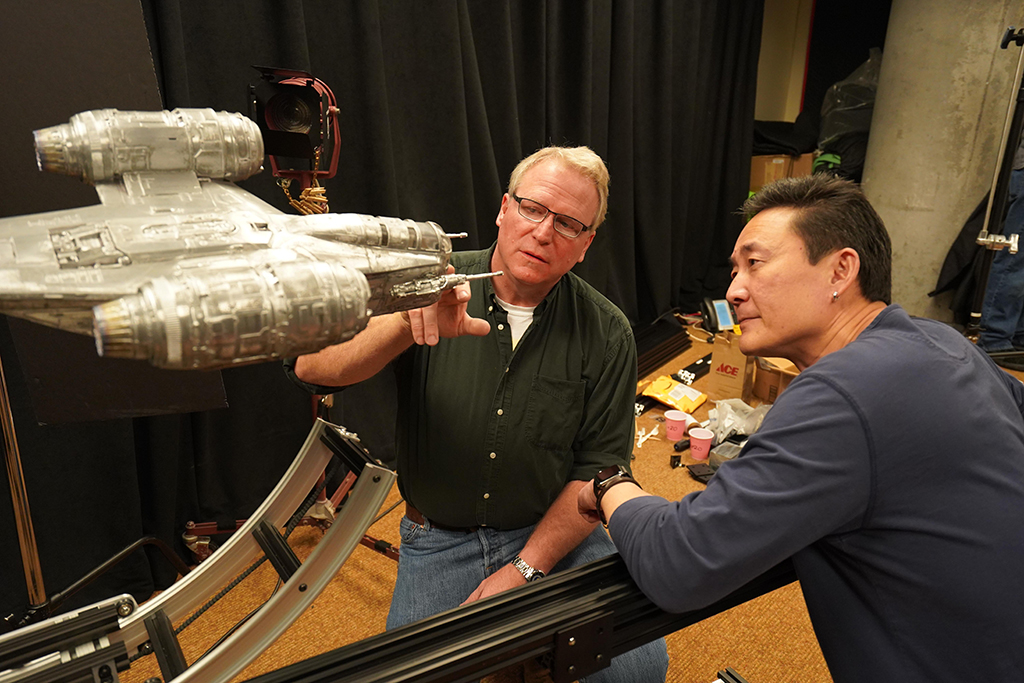
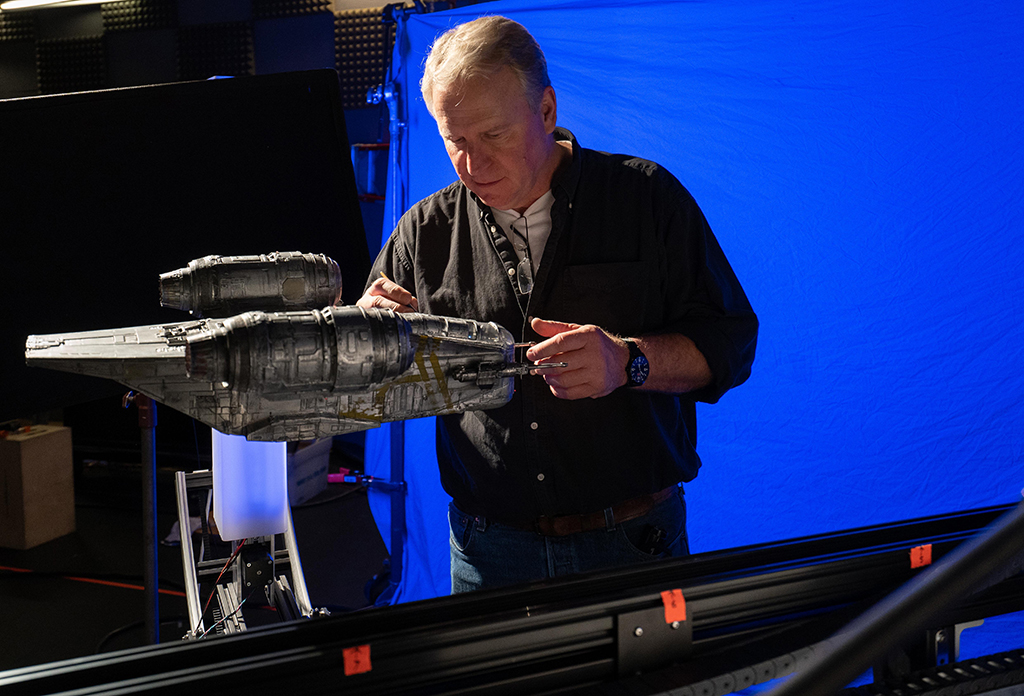
1977’s Star Wars revolutionized visual effects largely through the advent of motion control miniature photography. That became an industry mainstay for two decades before digital inroads led to CGI becoming the go-to methodology for most visual effects work. Even so, model-building was still a major aspect when it came to building the worlds seen in the Star Wars prequels and The Lord of the Rings trilogy. In recent years, Christopher Nolan and Jon Favreau have remained staunch proponents of featuring all manner of effects work, including miniatures. In fact, Favreau had directed the pilot for the Fox series The Orville, which featured a physical hero model of the titular starship.
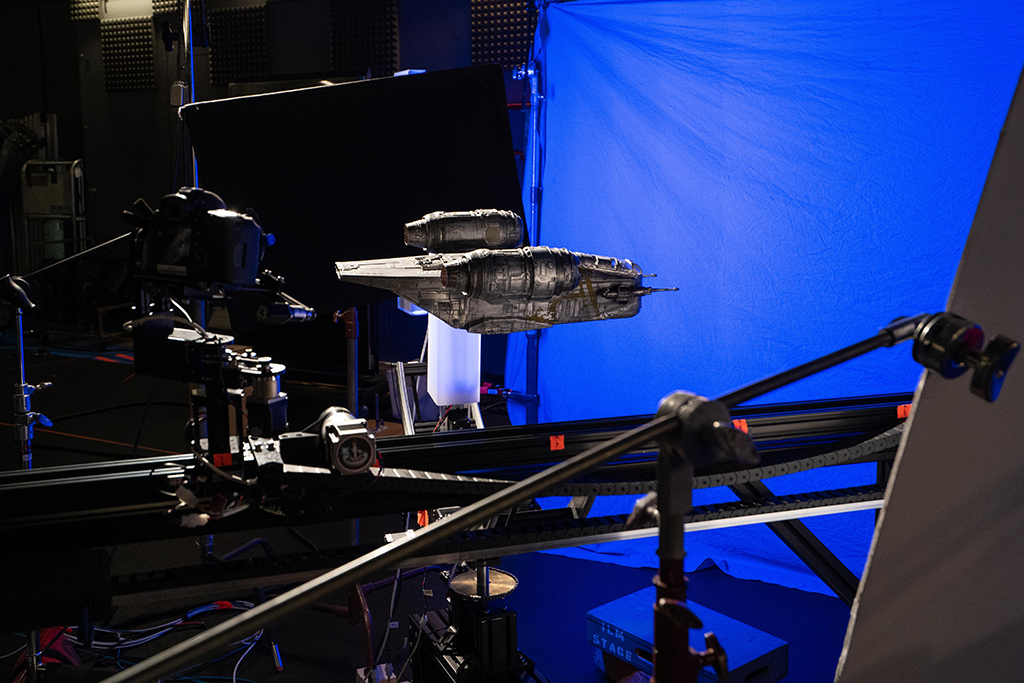
 Old-school bluescreen motion control photography of Razor Crest. Beauty lighting, engines and matte passes were each shot separately on the custom mo-con system built by John Knoll.
Old-school bluescreen motion control photography of Razor Crest. Beauty lighting, engines and matte passes were each shot separately on the custom mo-con system built by John Knoll.While in the process of creating The Mandalorian, Favreau felt it appropriate to again look towards physical solutions. “Jon himself stressed that he wanted to make things look like they had been filmed back in 1977 for the original Star Wars,” recalls production designer Andy Jones. “Working with him on The Jungle Book, he had a very similar mindset, not wanting to do shots that couldn’t be achieved with traditional cameras. If you’re above looking down at the action, it has to be from a logical vantage point, not just a God’s-eye helicopter perspective. You might think, ‘Why bother with models?’ when doing it in CG is an option, but there is just something about physical hand-made models that can be difficult to achieve digitally.” Though the model was initially only intended as a lighting reference for CGI work, that notion soon evolved much further.
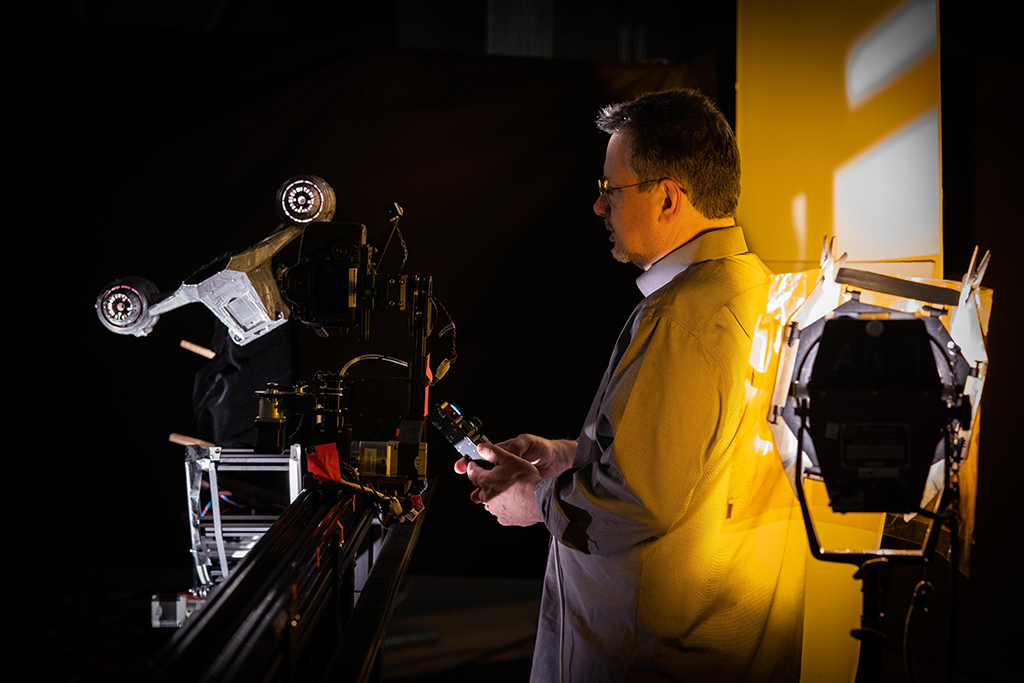
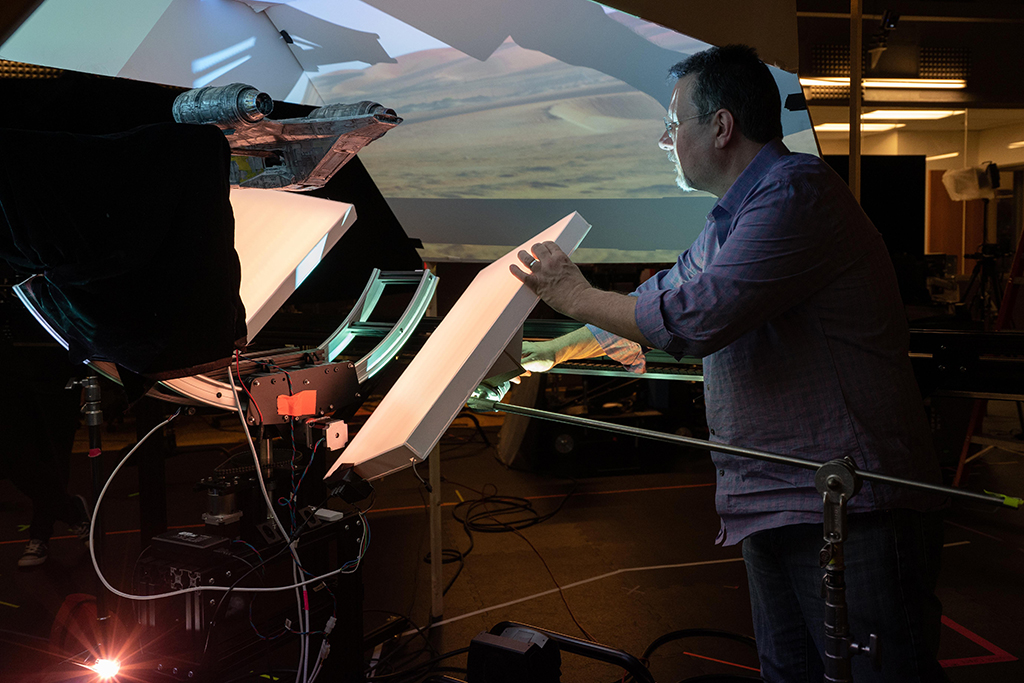
ILM VFX Supervisor Richard Bluff recalls that the decision to build a miniature of Mando’s ship Razor Crest required a mix of old- and new-school techniques. Virtual Production Visualization Supervisor Landis Fields began the process of construction. “After helping build it, Landis cut the ship up into many different pieces so they could be 3D printed on one of our high-fidelity units. Fortunately, some of our people have modelmaking backgrounds. Digital artist John Goodson [onetime ILM model shop supervisor] glued and sanded it, added the electronics and rigging on the inside, then made a silver foil pattern that went across the entire model for that aluminum feel.”
As word spread at the facility, others also got into the act. “[ILM CCO] John Knoll had wanted to leverage techniques used in past Star Wars projects, so he investigated firing up one of our old motion control rigs to shoot the Razor Crest,” Bluff continues. “Then John realized it would be quicker and done with greater fidelity if he built, machined and programmed a new one himself – a job he handled from within his own garage.”
The finished spaceship featured practical LED engine lighting and was shot using traditional motion control techniques involving multiple camera passes. “The model was used for shots in deep space, moving around and above planet surfaces, and jumps into hyperspace,” Bluff states. “Except for some very extreme dogfight maneuvers and flight inside a hanger [which were achieved via CGI], the miniature got used for pretty much everything.”
“[Director] Jon [Favreau] himself stressed that he wanted to make things look like they had been filmed back in 1977 for the original Star Wars. Working with him on The Jungle Book, he had a very similar mindset, not wanting to do shots that couldn’t be achieved with traditional cameras.”
—Andrew Jones, Production Designer
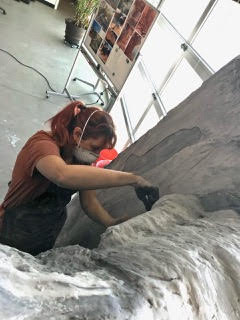
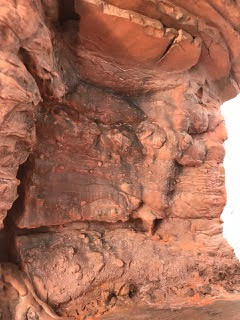
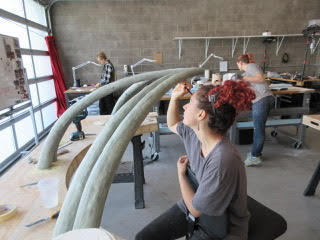
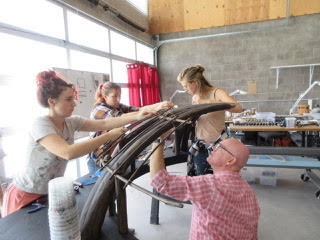
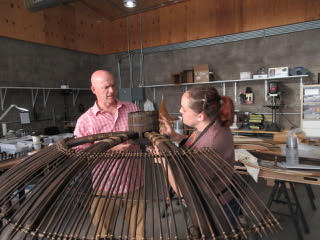
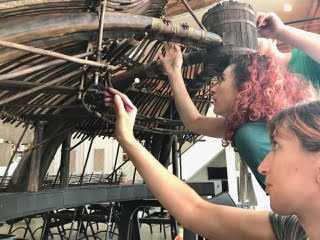
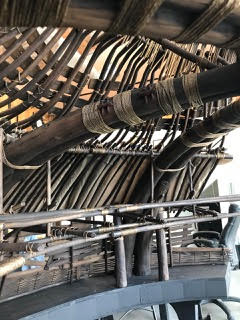
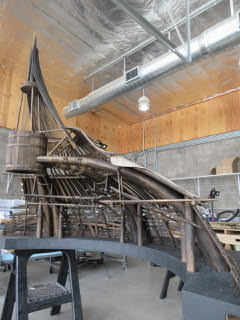
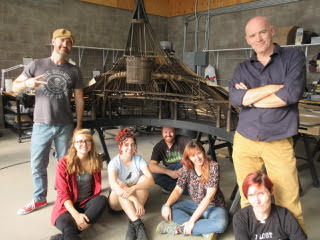
But the sky was not the limit for miniature involvement. “We had to mitigate the amount of CG work,” Bluff explains, “owing to their being only a five-week turnaround between the virtual art department giving us a model till the final rendered version would be seen projected on the LED screen in the volume. Andrew Jones and I came up with the idea of having a miniature for one interior. Landis and his team did photogrammetry on that model, and ILM brought those scans into the game engine. They didn’t have to lay out or light or texture, because all that came from the photoshoot of the lit miniature.”
To fabricate that build, Jones and LucasFilm executive producer Jason McGatlin invited Creation Consultants, Inc. creative director Dave Asling to act as vendor for the miniature, which led to additional landscape models for the series. Asling describes the assignment as a ‘bucket list moment’ for himself and his team of artists, who began by fashioning the interior – a representation of the wooden interior of the Sorgon Common House – as a large architectural model. “The miniature interior was created using modern materials and very old school processes: steaming and bending wood into various forms, and using rope lashings to create structural integrity. The majority of the model was constructed from natural materials so that organic imperfections would creep into the various structural elements, much like they would have if the real building had been constructed from local forest materials available to the natives.” Asling and crew also created a series of four 6′ x 4′ x 3′ models, representing variations in the terrain of cavern interiors and canyons of the Arvala Badlands, for a scene when the Mandalorian is ambushed.
Other physical miniatures featured in the series include a sand dune, forest and hillside. “We found through exploration that certain kinds of rock scale very well, and also found a painting process that scaled nicely,” notes Jones. “We are carrying this approach over into Season 2, so right now we are right back where we were decades ago with the use of miniatures.”